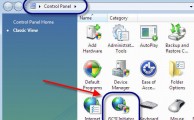History of Netbackup
In 1987, Chrysler Corporation engaged Control Data Corporation to write a backup software solution. A small group of engineers (Rick Barrer, Rosemary Bayer, Paul Tuckfield and Craig Wilson) wrote the software. Other Control Data customers later adopted it for their own needs. In 1990, Control Data formed the Automated Workstation Backup System business unit. The […]
Using rsync to move a mountain of data …
In this installment of my blog, I want to document the proper use of rsync for folks who are tasked with moving a large amount of data. I’ll even show you a few things you can do from the command line interface to extend the built-in capability of rsync using a little bash-scripting trickery. I […]
RPM Commands with Examples
RPM Commands and there Use’s Posted by Linux Mental on December 6, 2013, filed in: Centos Linux, Linux Distro, Linux How to Do, Linux server’s, Red Hat Linux, Tutorials How to use RPM Commands and It use’s RPM = Red Hat Package manager or RPM Package Manager Rpm is a Installation package which Used to […]
Recover a Corrupted System File
If an essential Windows file gets whacked by a virus or otherwise corrupted, restore it from the Windows CD. Search the CD for the filename, replacing the last character with an underscore; for example, Notepad.ex_. If it’s found, open a command prompt and enter the command EXPAND, followed by the full pathname of the file […]
tac – Unix, Linux Command
NAME : tac – tac is a Linux command that allows you to see a file line-by-line backwards. It is named by analogy with cat. SYNOPSIS tac [OPTION]… [FILE]… DESCRIPTION Write each FILE to standard output, last line first. With no FILE, or when FILE is -, read standard input. Mandatory arguments to long options are […]

How to configure Windows 7 to connect it to an iSCSI SAN .
Introduction :- In this article we will explain how to connect Windows 7 to an iSCSI SAN .This article will cover step by step guide on how to set it up and how it can help you. Note:-This article assumes that you have already have an iSCSI SAN up and running. Besides that, I assume that […]

How to run Google Chrome as root – Fedora 16, CentOS 6 / RHEL 6 Read
Google Chrome is a free web browser that takes just seconds to install. ~> Download package from https://www.google.com/intl/en/chrome/browser/ ~>Installation [root@Yogendra_Rathore ~]# rpm -ivh /root/Downloads/google-chrome-stable_current_x86_64.rpm ~> After installation of package # Edit this file /opt/google/chrome/google-chrome # find exec -a “$0” “$HERE/chrome” “$@” # now change as exec -a “$0” “$HERE/chrome” “$@” –user-data-dir ”/root/.config/google-chrome” save and exit . #now you […]